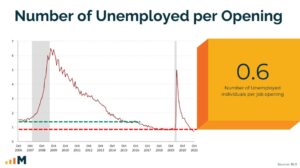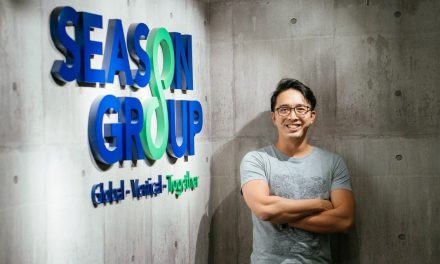The Talent Crisis – Let’s Stop Calling It a War
By Jennifer Read, EMSNOW Editor
Nearly every guest EMSNOW’s Publisher Eric Miscoll has interviewed over the past 18 months, whether in Asia, Europe, or the Americas, has voiced the same lament: we can’t find skilled people. This is an accelerating crisis as the world ramps up to meet the demands of an increasingly digitalized economy. It’s bad in every industry, but is especially acute in electronics manufacturing. What’s going on?
I’ll use the U.S. as my example. Through a combination of shrinking populations due to lower birth rates, the number of engineers retiring, the impact of the ‘Great Resignation’ after the chaos of the pandemic, and a few other cultural factors, the U.S. labor force has lost a staggering 2.1 million workers since February 2020. In addition, job openings have skyrocketed to 10.9 million, including 850,000 in manufacturing. All this while the unemployment rate has stayed very low.
What this means is starkly illustrated by the following chart. Yes, you read that right. There just aren’t enough people for the jobs that are available. Full stop.

Manufacturing Is Facing the Music
I would like to argue that electronics manufacturers in particular are also at a disadvantage because they are facing the consequences of decades of bad policies regarding factory workers. For many years, the bean counters have been encouraged to increase profitability at the expense of the workers. People in communities all across the country have been told that the reason the factory is closing is because U.S. workers were paid too much. Besides, they were told, factory jobs are dirty and polluting and we should all become ‘service economy workers’. Perhaps it’s understandable that the sons and daughters of the laid off workers in towns across the country are so very suspicious of policy makers’ sudden change of heart amid the rush to announce massive ‘re-shoring’ efforts to bring manufacturing back.
What can be done? In a very insightful series of webinars sponsored by the Electronic Component Industry Association (ECIA) Alex Chausousky, Director of Analytics and Consulting at the Miller Resource Group outlines the elements of a talent strategy for winning what he characterizes as a War for Talent. (I would argue that using military imagery when talking about the humans we want to build our products and manage our businesses is part of the problem. But hiring is certainly competitive). First step, he says, is if you don’t have a strategy, get one. Surprisingly, only about a third of the respondents in his research have a strategy. Using job posting websites and flooding your HR department with resumes doesn’t count, he says.

Industry-Academia Partnerships Are Doing Great Things in Certain Regions
There is a broad recognition that the industry is going to have to proactively find new populations of workers and convince them to consider STEM careers. With young people so attached to tech, it should be an easy sell. Where the situation is most acute, companies like Intel and Global Foundaries are working with local universities and community colleges to implement comprehensive programs to recruit, train, mentor, and hire people from diverse backgrounds. I highly recommend spending an hour and listening to a recent SIA webinar on the subject.
Speakers include Dr. Loria Gordon, Associate Dean at Jackson State University; Leah Palmer, Executive Director AzAMI Workforce at the Maricopa Country Community Colleges; Dr. Kara Perry, Education & Workforce Development Co-Lead and SCALE Program Manager at the Department of Defense; Tara McCaughey Workforce Development Lead at GlobalFoundries; and Robert Geer, Workforce Development lead at NY Creates. The session was moderated by Robert Casanova, Director of Industry Statistics and Economy Policy at SIA.
Presentations:
Investing in Business-Education Partnerships to Enhance the Talent Pipelines
Tara McCaughey, GlobalFoundries
Creating a Skilled Worker Pipeline for Microelectronics
Dr. Kara Perry, Department of Defense
Academic/Industry Partnerships: The New York State Model
Robert Geer, NY Creates
Partnerships Building a Pipeline Together
Leah Palmer, Maricopa Country Community Colleges
These experts have studied the problem, have tried a number of approaches and in this webinar share the model programs and high impact practices that are working in the semiconductor manufacturing regions of Phoenix and upstate New York. The educators have spent years learning from industry what skills are needed in this very demanding field. They have developed programs to address the gaps at all levels: entry level jobs, internal training for current employees to continually improve their knowledge, and the most advanced technology research programs at the PhD level. They have developed programs for underserved communities with mentorships that go far beyond the golf course and address the cultural and social aspects of bringing a wide range of students unfamiliar with these types of careers into the industry.
They start with K-12 programs, introducing students to the wonders of clean rooms and research labs, using Oculus VR sets and hands-on activities like letting the kids dress up in bunny suits. It is all very inspiring. But these programs must be expanded exponentially to address the full extent of the shortage.
High school students try out clean room gear during Global Foundaries’ STEM outreach event.
The Great Resignation
Using a new survey of 4,000 professionals in the U.S., Upwork finds that many professionals are less than enthused about the return to the office and are making moves as a result. Beyond just the expected move from one full-time role to another, there are also a substantial number of professionals who are considering making the move from full-time roles to freelancing. Already, businesses are dealing with an elevated level of resignations in a trend coined “The Great Resignation.” Their survey indicates that this is far from over.
Key Findings:
- Offices are reopening: Of those who were mostly remote during the pandemic, 25% are already back at the office and another 38% will return at some point.
- Professionals are not excited to go back: 34% of workers who were remote are not excited about returning to the office, compared to 24% who are.
- Remote work has become highly valued for some: Among those who are not excited about returning to the office, 24% would be willing to take a pay cut to work remotely, and 35% would consider it.
- The return to the office is fueling some of The Great Resignation: 17% of professionals that were working remotely during the pandemic would probably or definitely consider looking for another job if they have to go back to the office. This represents 9 million workers.
- Many are turning to freelancing: The Great Resignation isn’t just about workers moving from one full-time job to another; 20%, or 10 million Americans, are considering freelancing. Among those, 73% cite the ability to work remote or flexibly as a reason why.
- Growth in the freelance workforce: The 10 million people considering freelancing would represent a significant 17 percent increase in the total freelance workforce when compared to the 57 million people that freelanced in all of 2019.
In summary, it appears that the industry as a whole needs to stop thinking of workers as an expense and take a much more holistic approach to talent. Getting quality people to work in tech jobs is going to require a major shift in management thinking. Social media and platforms like Glass Door have enabled workers to gain the upper hand about salaries and working conditions when it comes to employment opportunities. If you aren’t staying on top of the salary and work-life balance expectations of your job applicants, you will be left in the dust. Is your HR department reaching out to community colleges and high schools to develop internship and apprentice programs? Have you defined your mission statement and communications to align with values of the communities you are drawing from? Do you tailor your job interviewing pitch to the type of position you are filling? Are you doing enough passive recruitment through LinkedIN and so forth to keep your talent pipeline open? You aren’t just competing with your peers for talent, but with the lure of becoming a social media influencer, starting a business, or deciding to become a free-lancer. The pandemic has changed people’s views about work, and management must adjust.
We will be covering this issue going forward. Let us know what is happening in your part of the world. Stay tuned for more stories from the trenches. Oops, there’s that war analogy again.











